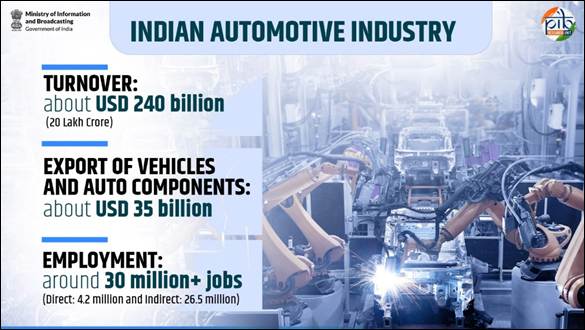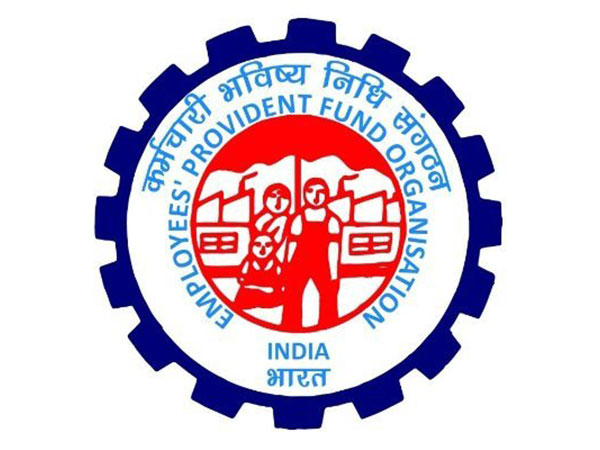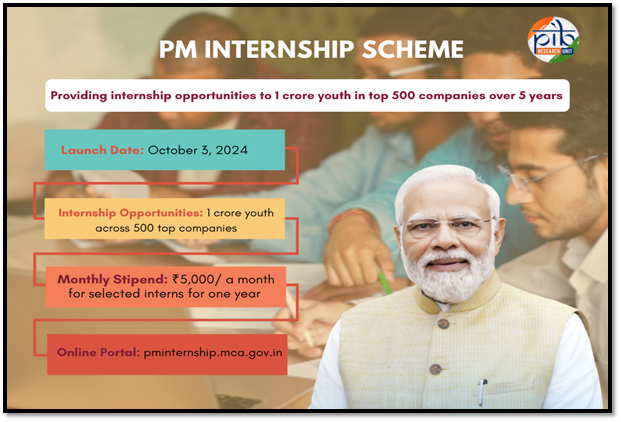India’s automobile industry has witnessed remarkable growth over the past decade, driven by policy reforms, infrastructure advancements, and a strong push for domestic manufacturing. A key catalyst in this transformation has been the Make in India initiative.
Launched in 2014, the initiative has fostered greater localization, innovation, and positioned India as a major global automotive hub. The sector has attracted substantial investment, boosted production, and made significant strides in electric vehicle (EV) manufacturing. Since the de-licensing of the industry and the introduction of 100% Foreign Direct Investment (FDI) under the automatic route in 1991, vehicle production has skyrocketed from 2 million in 1991-92 to approximately 28 million in 2023-24, reflecting India’s growing dominance in the global automobile market.
The Indian automotive industry currently boasts a turnover of $240 billion (INR 20 lakh crore), playing a crucial role in the nation’s economy. The Ministry of Heavy Industries’ Annual Report 2024-25 indicates that the sector provides employment to approximately 30 million people, including 4.2 million direct jobs and 26.5 million indirect jobs. Additionally, the export of vehicles and auto components reached $35 billion in the last fiscal year. India now stands as the world’s largest manufacturer of three-wheelers, ranks among the top two in two-wheeler production, is among the top four in passenger vehicle manufacturing, and features in the top five commercial vehicle producers globally.
The auto component industry has also emerged as a significant contributor to India’s manufacturing growth. This sector contributes 2.3% to the national GDP and directly employs over 1.5 million people. In FY24, the industry recorded a turnover of INR 6.14 lakh crore ($74.1 billion), with 54% of revenue coming from domestic Original Equipment Manufacturers (OEMs) and 18% from exports. The Ministry of Commerce and Industry reported that the sector has maintained a compound annual growth rate (CAGR) of 8.63% over FY16-FY24. Exports in FY24 stood at $21.2 billion, generating a trade surplus of $300 million, with projections indicating growth to $30 billion by 2026. The industry’s key export destinations include Europe ($6.89 billion), North America ($6.19 billion), and Asia ($5.15 billion).
To boost domestic production and reduce reliance on imports, the auto component industry is set to invest $7 billion by FY28 in advanced automotive technologies such as electric motors and automatic transmissions. Over the past two years, the industry has achieved a 5.8% reduction in imports, aligning with India’s ‘China Plus One’ strategy to diversify supply chains.
The automobile sector accounts for approximately 6% of India’s GDP. In FY24, India exported 4.5 million vehicles across various segments, while domestic production included 6.72 million passenger vehicles and 3.45 million two-wheelers. Foreign investments in India’s automobile industry have surged, with $36 billion in FDI inflows over the past four years. Major investments include Hyundai’s $4 billion (INR 33,200 crore) expansion plan, Mercedes-Benz’s $360 million (INR 3,000 crore) investment, and Toyota’s $2.3 billion (INR 20,000 crore) expansion initiative.
India’s EV market has witnessed significant growth, with 4.4 million EVs registered by August 2024, including 950,000 in the first eight months of the year alone, achieving a market penetration rate of 6.6%. The government has launched several initiatives to accelerate the shift towards sustainable mobility. The Ministry of Heavy Industries has implemented the Production Linked Incentive (PLI) Scheme for Advanced Chemistry Cell (ACC) battery storage and the Faster Adoption and Manufacturing of Hybrid & Electric Vehicles in India (FAME) Scheme.
In the Union Budget 2024-25, the government allocated INR 2,671.33 crore under the FAME scheme and announced customs duty exemptions on critical minerals required for EV battery production. Additionally, the Electric Mobility Promotion Scheme (EMPS) was introduced in March 2024 with a budget of INR 500 crore for four months, focusing on enhancing EV adoption in the two and three-wheeler segments. The discovery of lithium reserves in Jammu & Kashmir is expected to bolster India’s position in the global EV battery supply chain. Industry estimates project the EV sector to reach $113.99 billion by 2029.
The Ministry of Heavy Industries has implemented various schemes to drive EV adoption and develop charging infrastructure. The FAME India Scheme Phase II, launched in April 2019 with a budget of INR 11,500 crore, has sanctioned 2,636 charging stations across 62 cities in 24 states and Union Territories. The PLI Scheme for Auto and Auto Components, introduced in September 2021 with a budgetary outlay of INR 25,938 crore, aims to enhance domestic manufacturing of Advanced Automotive Technology (AAT) products. The PLI Scheme for Advanced Chemistry Cell (ACC), approved in May 2021 with INR 18,100 crore, focuses on establishing a robust domestic battery manufacturing ecosystem.
Other major initiatives include the PM Electric Drive Revolution in Innovative Vehicle Enhancement (PM E-DRIVE) Scheme, announced in September 2024 with an allocation of INR 10,900 crore, supporting EV manufacturing across various vehicle categories. Additionally, the PM e-Bus Sewa-Payment Security Mechanism (PSM) Scheme, launched in October 2024 with a budget of INR 3,435.33 crore, seeks to deploy over 38,000 electric buses nationwide. In March 2024, the Scheme for Promotion of Manufacturing of Electric Passenger Cars (SMEC) was introduced, requiring a minimum investment of INR 4,150 crore with a goal of achieving 50% domestic value addition within five years.
Other ministries have introduced policies to facilitate EV adoption. The Ministry of Power revised guidelines for EV charging infrastructure in September 2024 to create an interoperable network. The Ministry of Finance reduced the Goods and Services Tax (GST) on EVs from 12% to 5%. The Ministry of Road Transport & Highways (MoRTH) has exempted battery-operated vehicles from permit requirements and introduced green license plates for EVs. Furthermore, the Ministry of Housing and Urban Affairs has amended building by-laws to mandate EV charging stations in private and commercial buildings.




















